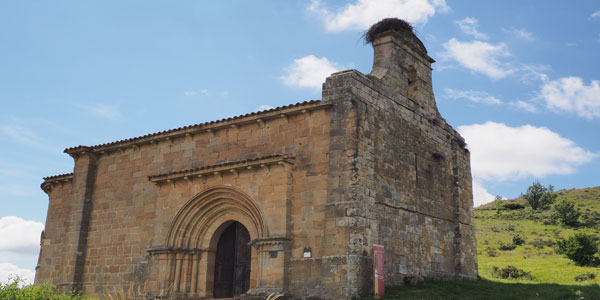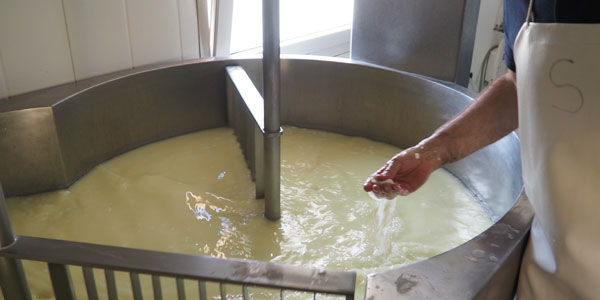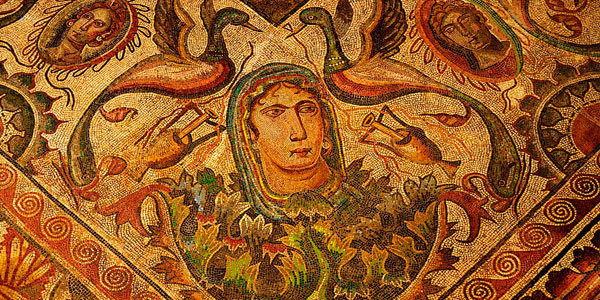Write: Monica Uriel. Journalist
The first edition of "Meet the wineries of Cerrato Palencia" is a good opportunity to get to know Palencia. Above all, its artisan cheese and foie gras production. In addition to touring its Romanesque churches and visiting the Roman Villa of La Olmeda and the exhibition The ages of man.
Get to know Palencia
On Saturdays in August, the wineries of this region -with two DO of wine, Cigales and Arlanza- located in the municipalities of Baltanás, Dueñas, Astudillo and Torquemada will open their doors for tastings within the first edition of the initiative coordinated by ADRI Cerrato Palentino , which also includes a visit to the winery district.
In the hill there is an example of the Romanesque art of the province. It is the monumental church of Santa María la Mayor, in Villamuriel de Cerrato. Very close by, the Monastery of San Isidro de Dueñas stands right in front of the La Trapa chocolate factory. He received the recipe from the Trappist monks, who began to make it in 1891 at the monastery.
Palencia has 223 Romanesque churches, the highest concentration of Romanesque art in Europe. A good part of them are found around Aguilar de Campoo and Cervera de Pisuerga. They are the entrance doors to the Palentina Mountain. The construction fever occurred in the XNUMXth century, with King Alfonso VIII. When all the towns were dedicated to building churches in the style of the time that happened.
Aguilar de Campoo
The great masters of this art arrived here and quarries were formed around them. An essential visit for lovers of Romanesque is Santa María la Real, in Aguilar de Campoo. A monastery of which the cloister and the sculptures of the capitals stand out. It lay in ruins for a long time until a Peridis project saved it from ruin.
Very close to Aguilar de Campoo is the rock-cut Olleros de Pisuerga parish. It is classified as the "basilica of the rock hermitism".
This year in Aguilar de Campoo you can visit the religious art exhibition "The ages of man." It is entitled "Mons Dei" and is dedicated to the mountains. They are revered in the great religious traditions as sacred places.
Nª Sra de la Asunción Church

Aguilar de Campoo (Palencia) is an emblematic biscuit town in Spain. There were up to five cookie factories. Fontaneda and Gullón settled here as they had cereal. Thus, it is Tierra de Campos - it was known as the "granary" of Spain - since products entered by boat from the Cantabrian Sea.
Historical evolution
They came from the old Spanish colonies like sugar, cocoa and vanilla. Gullón, which employs 1.400 people, is today the largest cookie maker in Europe. By turnover (340 million euros) and by area (140.000 square meters). Its founder, Manuel Gullón, introduced something in Spain in 1892 that until then was unknown: cookies. They had been created at the beginning of the century in England.
In the 80s, its current president, María Teresa Rodríguez, created the first integral biscuit on the Spanish market. Later, Gullón focused on the cookie-health segment, which has earned him several awards.
Cheese
Before being agricultural, Palencia, like all of Castilla y León, was livestock. Its cheese-making origins date back to Prehistory. One of the cheese shops that can be visited, in the middle of the Palentina Mountain, is Quesos Cantarillos. You will find it in the Catatur App Guide (catatur.com).
Its owner, Santiago Merino, brought goats from the Swiss Alps, which adapt to the altitude of 1.000 meters here and the cold of winter. "Genetically, the Spanish goat is far from the French," says Merino. It has 500 goats and has been making goat cheese since 2013. In total, it produces 16.000 kilos of cheese a year. For goat cheese you need nine liters of milk, while for sheep cheese, five.
Cantarillos Cheese Factory

In Villamartín, Tierra de Campos (Palencia) you can attend the production of pâté and foie gras at El Pato de Villamartín, by Selectos de Castilla. The duck that is raised here is a hybrid: the Mulard duck, of traditional, rustic and heavy stock. Until adulthood the animals are in semi-freedom feeding on cereals and proteins of vegetable origin. For the embuche corn in grain is used. In this way the duck self-regulates the amount that its gizzard digests in a natural digestion.
Mosaic Photo of Villa Romana La Olmeda

Roman Villa of the Olmeda
Pate and foie gras could well have been eaten by the hundred people who came to live in the Villa Romana de la Olmeda. It was a great mansion of the Lower Empire (50th century AD), whose discovery is now XNUMX years old. It is the second most important Roman site in Europe, after Villa del Casale, in Sicily (Italy).
You can see 1.500 square meters of mosaics in very good condition. The main scene of the most famous mosaic, located in the main hall of the house or "oecus", of 175 square meters. This is how the well-known episode of Ulysses in Skyros narrates it. It is surrounded by a border with a series of portraits attributed to the owners of the house, something exceptional.
Deer horns dating back 1.600 years ago were hung in this room as hunting trophies. There are mosaics in 26 rooms of the 36 that the house had - a symmetrical mansion with four wings - that occupied 4.400 meters and that is attributed to someone related to the emperor.
In the 1968th century it was abandoned until in XNUMX the owner of this land, Javier Cortes, discovered it. It was by chance doing search work. It had always been covered - hence the good conservation of the mosaics - and it was the introduction of tractors that led to its discovery.






